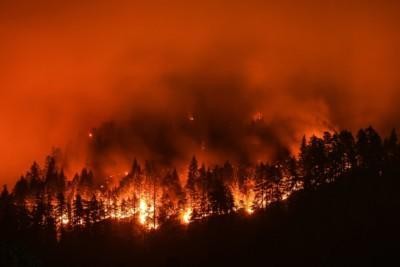December 15, 2021
Learning to understand (and manage) climate risks
Floods, typhoons and tornados, forest fires, drought, and extreme heat. Extreme weather conditions have become part of our daily news. As the drastic effects of climate change become more evident, financiers, such as Finnfund, must learn to understand and live with the risks.
Understanding the climate risks is particularly important because nearly all our portfolio companies are located in areas that rank amongst the most vulnerable and least prepared to cope with climate change impacts. Our focus geographies in Africa and the rest of the developing world are found at the bottom end of for example the ND-Gain indexes, that measure countries’ vulnerability to climate change and their readiness to tackle climate risks and impacts.

Extreme weather conditions have become part of our daily news.
This year Finnfund has introduced the assessment of physical climate risks into our investment process, and transition risk assessment is being incorporated as we speak. Climate risks are material, and we want to understand how they will affect our portfolio performance. We also need to understand how climate change is affecting and will affect our investments in the future. This opens us the possibility to fulfil our development financier mandate even better by being able to support our investee companies and the societies around them to better cope with climate change.
For us, this is one way to put our climate commitments into practice. The aim is to incorporate climate-related risks and opportunities into our risk management and strategic planning processes and disclose climate-related risks according to the TCFD framework. In the following months, we will share the process and key findings on our website and our annual report.
Not only fascinating but frustrating, too
The journey to develop the physical climate risk assessment methodology has been both fascinating and frustrating. Frustrating, because the methodologies and knowledge available on climate risks seem to be either too general, or very much too specific, and discovering the pathways through which the climate change impacts can turn into concrete physical climate risks in our investments often requires thinking of our projects from new perspectives.
Screening climate risks for any specific case also reveals a world of predictions, approximations, and uncertainties that makes one humble and grave for more knowledge and certainty: How sure are we it will still rain in this area 5 years from now? How much are the mean or peak temperatures going to increase in this location in the next 5–10 years and is it going to be significant? And so forth.
The fascinating part has been to interact with people in this context. Our investment managers were asked about the climate risks they have already encountered in our portfolio. The answers were amazing: A small banking business located in one city was wiped away when an extreme storm event hit the city, excessive rain has postponed tree harvesting, due to droughts a company changed farming strategies completely, a new regulation has halted construction of projects in certain areas due to high landslide risks, etc.
Sharing these types of experiences motivates to continue conducting the climate risk assessments.
Learning from our investee companies
However, the most exciting part has been to test the methodology and talk about climate risks with our investees and prospective investees. It has been very encouraging to see that if thinking of climate risks has been hard for us, it seems to be rather familiar and straightforward to many of our investee companies.
This is partly because they already at present deal with increasing heavy rains causing bad road transport conditions, lack of rain affecting crop productivity if not mitigated, increased risks of wildfires due to droughts, power cuts, internet and connectivity cuts, damage to infrastructure due to hard weather conditions, etc.
Thus, my impression is that answering questions about physical climate risks only seems natural to many of our investees. In most cases, they are also able to present effective mitigation measures – either physical modification of their activities, or project management considerations such as more flexible timelines, insurances, etc. Learning from these experiences and sharing best practices is extremely valuable.
Cooperation and harmonisation are key
Climate risk assessment methodologies and tools are being developed at an increasing pace worldwide. Our approach to climate risks will be subject to ongoing development as the knowledge base on both the physical and transition risks associated with climate change constantly evolves.
To align methodologies and approaches with other development financiers Finnfund actively participates in the physical climate risk working group of the Adaptation and Resilience Investors Collaborative. We hope this will help both us and our investee companies to better cope with climate change.
At the same time, we also need to accept that some climate risks can be mitigated, some cannot, no matter how hard we try. We all need to adapt, and an increasing amount of adaptation finance is needed to build resilience in the countries where we work.
It is good to note, that in addition to avoiding harm, at its best adaptation can also speed up positive developments in many sectors and across societies. How to do it in practice? You may read more on the topic in this article.
Seela Sinisalo
Environmental and social adviser
Read more
Climate effects – Finnfund
Climate accounting – our work in practice – Finnfund
Capturing adaptation opportunities – Finnfund
